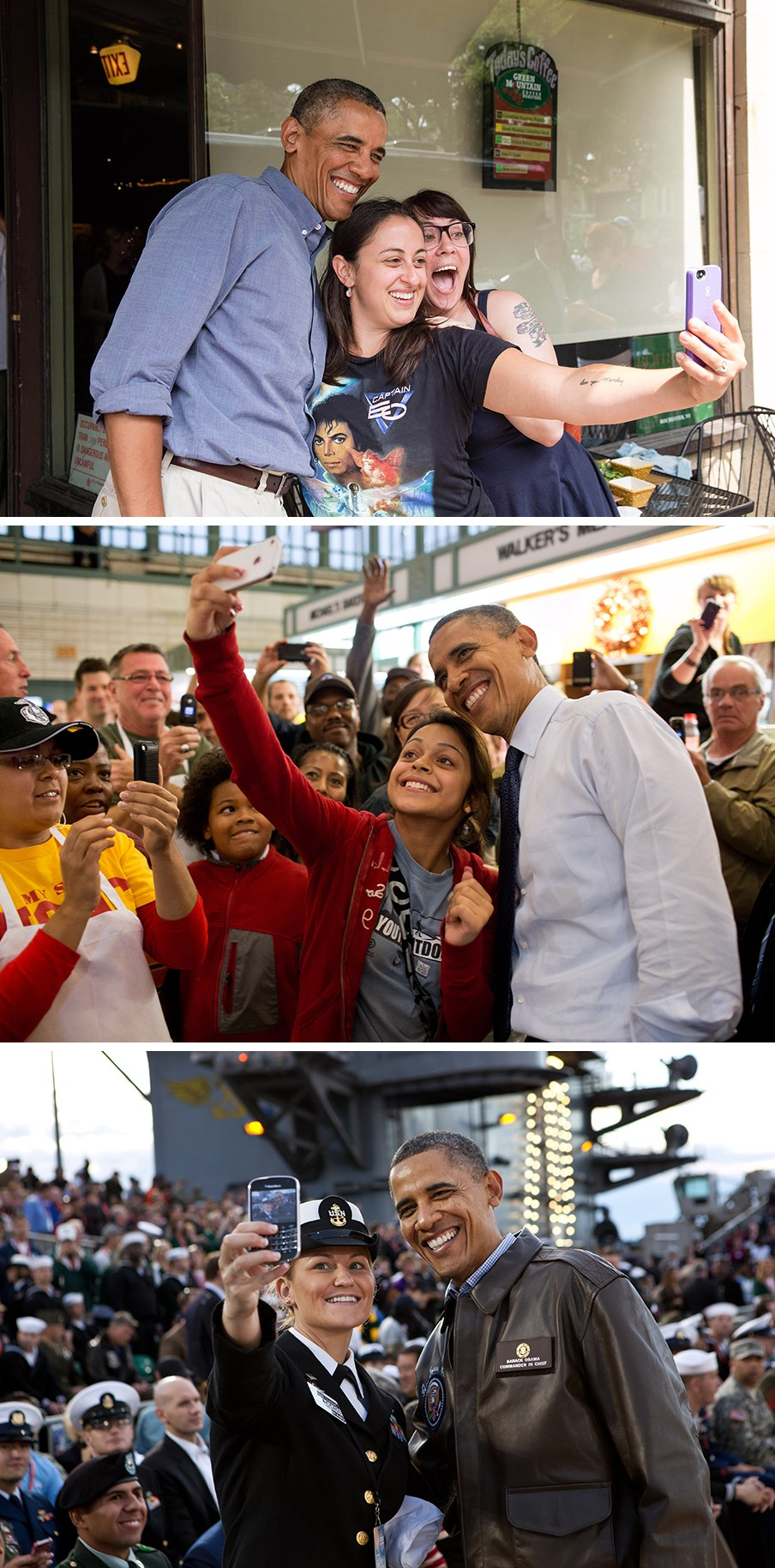By Sterre Sprengers
A picture is a split second of reality. How long would the moment on this picture have lasted? Obama is hunched over so far that he seems to have turned around. He could keep on walking, but perhaps he has to go. And the woman in the blue coat, has she already shaken Obama’s hand? Is that why her hands are folded again? Or has she been overtaken by the boy on the second row, who is trying even harder to get the President’s attention? The people to the left of the women are turned sideways. Would there be a crush barrier over there too? Maybe Obama just slipped around the corner, about to continue his way again? In that case, the man visible behind Obama’s head could be a security guard. Eight cell phones went into the air to capture this moment. Eight cell phones and a tablet (or is the purple thing on the right, behind the head of the woman in the blue coat, the cover of yet another tablet?). The two girls up front go even further. At the very moment they could meet the President, they turn their backs to him. They do not only want their own picture of the President, they want a picture with themselves included. They look like they have done it before, making a selfie. They hold their devices up high, bend backwards, and arrange themselves in the foreground to make room for the man it is all about. Or is it all about the makers themselves? And Obama? He knows how it works. For him there is one thing left to do: pose! He moves his head downwards, so he can look around the virtual corner. He checks if he is in the picture. He waves to the camera with his hand low, so it won’t cover his face. He makes sure the girl gets a picture she can proudly show around. This picture says it all: ‘I have seen the President.’

@ Pete Souza/ The White House
You can see the entire ‘selfie’ collection here.
For eight years, White House photographer Pete Souza took 20,000 pictures a week of Obama. That’s right, 20,000 a week, many of which were posted on the White House Flickr account. Sterre Sprengers, image editor at De Correspondent, has followed his work for years, in search of patterns – patterns that reveal relationships of power, etiquette, love. And patterns that subtly reveal the image of the president that Souza created with his images. As time went on, once he had firmly established the presidential image, he took fewer solemn portraits and more images that were lighthearted or artistic. Gradually his work for the White House came to reflect his own personal taste. That is an achievement.
Until Jan. 20th, when Obama’s successor Trump will be inaugurated, the John Adams will present once a day an image and a text from the project Sterre Sprengers published on the daily online news medium ‘De Correspondent’. You can see the entire project here.
